 W
WDoughboy was a popular nickname for the American infantryman during World War I. Though the origins of the term are not certain, the nickname was still in use as of the early 1940s. Examples include the 1942 song "Johnny Doughboy Found a Rose in Ireland", recorded by Dennis Day, Kenny Baker, and Kay Kyser, among others, the 1942 musical film Johnny Doughboy, and the character "Johnny Doughboy" in Military Comics. It was gradually replaced during World War II by "G.I."
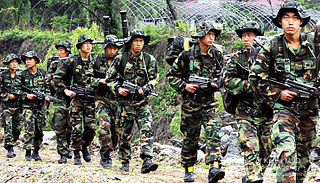 W
WInfantry is an army specialization whose personnel engage in military combat on foot, distinguished from cavalry, artillery, and armored forces. Also known as foot soldiers, infantrymen or infanteer, infantry traditionally rely on traveling by foot between combats as well, but may also use mounts, military vehicles, watercraft, or aircraft for between-combat mobility and logistics. Infantry make up a large portion of all armed forces in most nations, and typically bear the largest brunt in warfare, as measured by casualties, discomfort, fatigue, and both physical and psychological stress.
 W
WThe 32nd Budapest Guard and Ceremonial Regiment of the Hungarian Defence Forces is a ceremonial infantry unit in the Hungarian military, headquartered in the capital of Budapest. It is under the direct supervision of Budapest Garrison Brigade "Vitéz Sándor Szurmay" of the HDF General Staff. Aside from its ceremonial duties, the soldiers of the regiment, along with its historical predecessors, have been involved in 14 wars, 135 battles, and 6 United Nations and NATO missions.
 W
WAir assault is the movement of ground-based military forces by vertical take-off and landing (VTOL) aircraft—such as the helicopter—to seize and hold key terrain which has not been fully secured, and to directly engage enemy forces behind enemy lines. In addition to regular infantry training, air-assault units usually receive training in rappelling, fast-rope techniques and air transportation, and their equipment is sometimes designed or field-modified to allow better transportation within aircraft.
 W
WAshigaru were infantry employed by the samurai class of feudal Japan. The first known reference to ashigaru was in the 14th century, but it was during the Ashikaga shogunate that the use of ashigaru became prevalent by various warring factions.
 W
WBicycle infantry are infantry soldiers who maneuver on battlefields using military bicycles in a form of foot drill called bike drill. The term dates from the late 19th century, when the "safety bicycle" became popular in Europe, the United States, and Australia. Historically, bicycles lessened the need for horses, fuel and vehicle maintenance. Though their use has waned over the years in many armies, they continue to be used in unconventional armies such as militias.
 W
WThe 1st Regiment of Foot Infantry "Bolivian Colorados" National Presidential Escort Regiment of the Bolivian Army, formerly the 39th Line Infantry Battalion "Colorados" is one of the Army's oldest and most prestigious infantry regiments. It is headquartered in La Paz's Miraflores District, and is under the direct supervision of Bolivian Army headquarters.
 W
WA broken square refers to an infantry square collapsing or breaking up in battle.
 W
WA carabinier is in principle a soldier armed with a carbine. A carbiniere is a carabiniere musket or rifle. Carabiniers were first introduced in the late 17th century and were commonplace by the beginning of the Napoleonic Wars in Europe. The word is derived from the identical French word carabinier.
 W
WChasseur, a French term for "hunter", is the designation given to certain regiments of French and Belgian light infantry or light cavalry to denote troops trained for rapid action.
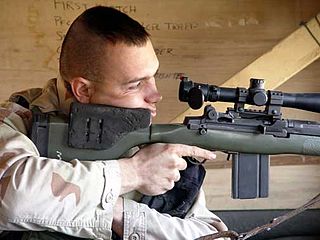 W
WA designated marksman (DM), squad advanced marksman (AD) or squad designated marksman (SDM)) is a military marksman role in an infantry squad. The term sniper was used in Soviet doctrine although the soldiers using the Dragunov SVD were the first to use a specifically designed designated marksman's rifle. The analogous role in the Israeli army is sharpshooter.
 W
WDragoons originally were a class of mounted infantry, who used horses for mobility, but dismounted to fight on foot. From the early 17th century onward, dragoons were increasingly also employed as conventional cavalry and trained for combat with swords and firearms from horseback.
 W
WThe Fallschirmjäger were the paratrooper branch of the German Luftwaffe before and during World War II. They were the first German paratroopers to be committed in large-scale airborne operations. Throughout World War II the Fallschirmjäger commander was Kurt Student.
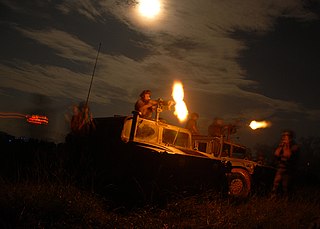 W
WFinal protective fire refers to a tactical plan for a military unit, set up in support of the infantry, to protect itself against overwhelming attack. Final protective fire ("FPF") is a request for artillery support generally reserved for a unit being overrun, and has absolute priority over any other kind of request.
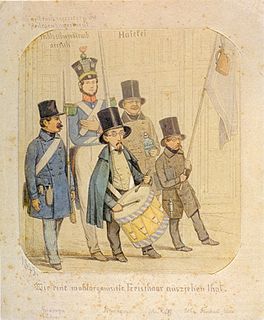 W
WThe Freischar was the German name given to an irregular, volunteer military unit that, unlike regular or reserve military forces, participated in a war without the formal authorisation of one of the belligerents, but on the instigation of a political party or an individual. A Freischar deployed against a foreign enemy was often called a Freikorps. The term Freischar has been commonly used in German-speaking Europe since 1848. The members of a Freischar were called Freischärler. As early as 1785 Johann von Ewald published in Kassel his Essay on Partisan Warfare, which described his experiences with the rebels in the North American colonies.
 W
WFusilier is a name given to various kinds of soldiers; its meaning depends on the historical context. While fusilier is derived from the 17th-century French word fusil – meaning a type of flintlock musket – the term has been used in contrasting ways in different countries and at different times, including soldiers guarding artillery, various elite units, ordinary line infantry and other uses.
 W
WGlider infantry was a type of airborne infantry in which soldiers and their equipment were inserted into enemy-controlled territory via military glider. Initially developed in the late 1930s by Germany, glider infantry units were used extensively during World War II but are no longer used by any modern military.
 W
WA grenadier was originally a specialized soldier, first established as a distinct role in the mid-to-late 17th century, for the throwing of grenades and sometimes assault operations. At that time grenadiers were chosen from the strongest and largest soldiers. By the 18th century, dedicated grenade throwing of this sort was no longer relevant, but grenadiers were still chosen for being the most physically powerful soldiers and would lead assaults in the field of battle. Grenadiers would also often lead the storming of fortification breaches in siege warfare, although this role was more usually fulfilled by all-arm units of volunteers called forlorn hopes, and might also be fulfilled by sappers or pioneers.
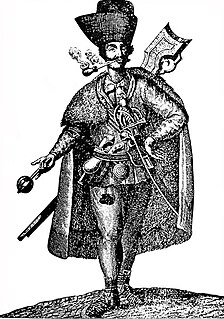 W
WGrenz infantry or Grenzers were light infantry troops who came from the Military Frontier in the Habsburg Monarchy. This borderland formed a buffer zone between Christian Europe and the Ottoman Empire, and the troops were originally raised to defend their homelands against the Ottoman Turks. When there was no danger of war against the Ottomans, the Grenzer regiments were employed by the Habsburgs in other theatres of war, although one battalion of each regiment would always remain guarding the border.
 W
WHeavy infantry consisted of heavily armed and armored infantrymen that were trained to mount frontal assaults and/or anchor the defensive center of a battle line. This differentiated them from light infantry who are relatively mobile and lightly armored skirmisher troops intended for screening, scouting, and other tactical roles unsuited to soldiers carrying heavier loads. Heavy infantry typically made use of dense battlefield formations, such as shield wall or phalanx, multiplying their effective weight of arms with force concentration.
 W
WThe human wave attack, also known as the human sea attack, is an offensive infantry tactic in which an attacker conducts an unprotected frontal assault with densely concentrated infantry formations against the enemy line, intended to overrun and overwhelm the defenders by engaging in melee combat. The name refers to the concept of a coordinated mass of soldiers falling upon an enemy force and sweeping them away with sheer weight and momentum, like an ocean wave breaking on a beach.
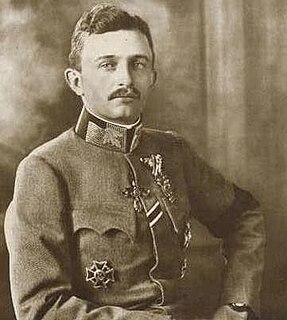 W
WThe Imperial-Royal Mountain Troops were founded in 1906 as part of the Austrian Landwehr, the territorial army of the Cisleithanian half of the Austro-Hungarian Empire. As a result, the abbreviation "k.k." was used and not "k.u.k." which would have implied a connexion with the Hungarian half of the Empire.
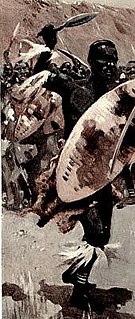 W
WImpi is a Zulu word meaning war or combat, and by association any body of men gathered for war, for example impi ya masosha is a term denoting 'an army'. Impi were formed from multiple regiments(amabutho in Zulu) from amakhanda(large militarised homesteads). However, in English impi is often used to refer to a Zulu regiment, which is called an ibutho in Zulu, or the army itself. Its beginnings lie far back in historic tribal warfare customs, when groups of armed men called impi battled. They were systematised radically by the Zulu king Shaka, who was then only the exiled illegitimate son of king Senzangakhona kaJama, but already showing much prowess as a general in the army (impi) of Mthethwa king Dingiswayo in the Ndwandwe–Zulu War of 1817–1819.
 W
WInfantry Attacks is a classic book on military tactics written by Erwin Rommel about his experiences in World War I. At the time of the book's writing in the mid-1930s, Rommel's rank was lieutenant colonel. Rommel had planned to write a successor called Panzer greift an about tank warfare, and gathered much material during the North Africa Campaign. However, he was forced to commit suicide before completing this work.
 W
WDespite the rise of knightly cavalry in the 11th century, infantry played an important role throughout the Middle Ages on both the battlefield and in sieges. From the 14th century onwards, there was a rise in the prominence of infantry forces, sometimes referred to as an "infantry revolution".
 W
WAn infantry square, also known as a hollow square, was a historic combat formation in which an infantry unit formed in close order, usually when it was threatened with cavalry attack. As a traditional infantry unit generally formed a line to advance, more nimble cavalry could sweep around the end of the line and attack from the undefended rear or burst through the line, with much the same effect. By arranging the unit so that there was no undefended rear, a commander could organise an effective defense against a cavalry attack. With the development of modern firearms and the demise of cavalry, that formation is now considered obsolete.
 W
WInfantry tactics are the combination of military concepts and methods used by infantry to achieve tactical objectives during combat. The role of the infantry on the battlefield is, typically, to close with and engage the enemy, and hold territorial objectives; infantry tactics are the means by which this is achieved. Infantry commonly makes up the largest proportion of an army's fighting strength, and consequently often suffers the heaviest casualties. Throughout history, infantrymen have sought to minimise their losses in both attack and defence through effective tactics.
 W
WJäger is a German military term that originally referred to light infantry, but has come to have wider usage.
 W
WA Janissary was a member of the elite infantry units that formed the Ottoman Sultan's household troops and the first modern standing army in Europe. The corps was most likely established during the Viziership of Alaeddin under Sultan Orhan (1324–1362).
 W
WThe k.k. Landesschützen - from 16 January 1917 Kaiserschützen - has been three regiments of Austro-Hungarian mountain infantry during the kaiserliche und königliche Monarchie. As a rule, only Tyrolean and Vorarlbergen men were hired in the Landesschützen.
 W
WLight infantry is a designation applied to certain types of foot soldiers (infantry) throughout history, typically having lighter equipment or armament or a more mobile or fluid function than other types of infantry, such as heavy infantry or line infantry. Historically, light infantry often fought as scouts, raiders, and skirmishers—soldiers who fight in a loose formation ahead of the main army to harass, delay, disrupt supply lines, and generally "soften up" an enemy before the main battle. After World War II, the term "light infantry" evolved, and now generally refers to rapid-deployment units that specifically emphasize speed and mobility over armor and firepower. Some units or battalions that historically held a skirmishing role have kept their designation "light infantry" for the sake of tradition.
 W
WLine infantry was the type of infantry that composed the basis of European land armies from the late 17th century to the middle of the 19th century. Maurice of Nassau and Gustavus Adolphus are generally regarded as its pioneers, while Turenne and Montecuccoli are closely associated with the post-1648 development of linear infantry tactics. For both battle and parade drill, it consisted of two to four ranks of foot soldiers drawn up side by side in rigid alignment, and thereby maximizing the effect of their firepower. By extension, the term came to be applied to the regular regiments "of the line" as opposed to light infantry, skirmishers, militia, support personnel, plus some other special categories of infantry not focused on heavy front line combat.
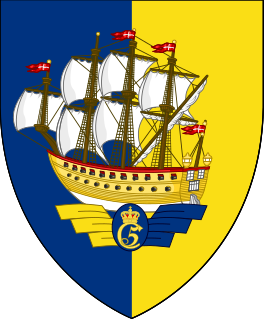 W
WThe Marine Regiment was the naval infantry of the Royal Dano-Norwegian Navy, and later an infantry regiment, established in 1672 by Christian IV and based at Glückstadt Naval Station.
 W
WMechanized infantry are infantry units equipped with armored personnel carriers (APCs) or infantry fighting vehicles (IFVs) for transport and combat.
 W
WIn NATO and most other western countries, motorized infantry is infantry that is transported by trucks or other motor vehicles. It is distinguished from mechanized infantry, which is carried in armoured personnel carriers or infantry fighting vehicles, and from light infantry, which can typically operate autonomously from supporting elements and vehicles for relatively long periods and may be airborne.
 W
WA musketeer was a type of soldier equipped with a musket. Musketeers were an important part of early modern armies, particularly in Europe, as they normally comprised the majority of their infantry. The musketeer was a precursor to the rifleman. Muskets were replaced by rifles in most western armies during the mid-1850s. The traditional designation of "musketeer" for an infantry private survived in the Imperial German Army until World War I.
 W
WPanzergrenadier, abbreviated as PzGren (modern) or PzG (WWII), is a German term for motorised or mechanized infantry – that is, infantry transported in combat vehicles specialized for such tasks – as introduced during World War II. It is used in the armies of Austria, Germany and Switzerland.
 W
WThe Paracadutisti are a speciality of the Italian army's infantry corps.
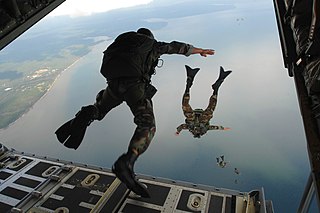 W
WAirborne forces are ground combat units carried by aircraft and airdropped into battle zones, typically by parachuting. Foot soldiers serving an airborne force are known as airborne infantry or paratroopers.
 W
WA paratrooper is a military parachutist—someone trained to parachute into an operation, and usually functioning as part of an airborne force. Military parachutists (troops) and parachutes were first used on a large scale during World War II for troop distribution and transportation. Paratroopers are often used in surprise attacks, to seize strategic objectives such as airfields or bridges.
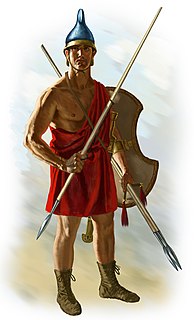 W
WA peltast was a type of light infantry, originating in Thrace and Paeonia, who often served as skirmishers in Hellenic and Hellenistic armies. In the Medieval period, the same term was used for a type of Byzantine infantryman.
 W
WThe pike square was a military tactic developed by the Swiss Confederacy during the 14th century for use by its infantry.
 W
WA rifleman is an infantry soldier armed with a rifled long gun. Although the rifleman role had its origin with 16th century hand cannoneers and 17th century musketeers, the term originated in the 18th century with the introduction of the rifled musket. By the mid-19th century, entire regiments of riflemen were formed and became the mainstay of all standard infantry, and rifleman became a generic term for any common infantryman.
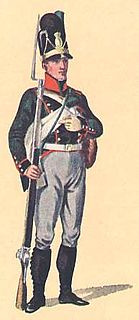 W
WSchützen is a German plural noun used to designate a type of military unit of infantrymen, originally armed with a rifled musket and used in a light-infantry or skirmishing role - and hence similar to the Jäger. The individual infantrymen are termed Schütze. Prior to the introduction of firearms the word was used for 'archer', and is sometimes used in the form Bogenschütze.
 W
WShock troops or assault troops are formations created to lead an attack. They are often better trained and equipped than other infantry, and expected to take heavy casualties even in successful operations.
 W
WSkirmishers are light infantry or light cavalry soldiers deployed as a vanguard, flank guard or rearguard to screen a tactical position or a larger body of friendly troops from enemy advances. They are usually deployed in a skirmish line, an irregular open formation that is much more spread out in depth and in breadth than a traditional line formation. Their purpose is to harass the enemy by engaging them in only light or sporadic combat to delay their movement, disrupt their attack, or weaken their morale. Such tactics are collectively called skirmishing.
 W
WStormtroopers were specialist soldiers of the German Army in World War I. In the last years of the war, Stoßtruppen were trained to use infiltration tactics – part of the Germans' improved method of attack on enemy trenches. Men trained in these methods were known in Germany as Sturmmann, formed into companies of Sturmtruppen.
 W
WTank desant is a military combined arms tactic, where infantry soldiers ride into an attack on tanks, then dismount to fight on foot in the final phase of the assault. Note that this differs from infantry troops merely riding on tanks as a form of ad-hoc transportation. Desant is a Russian general term for airborne or parachute drops and naval infantry amphibious landing operations.
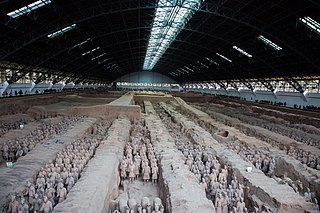 W
WThe Terracotta Army is a collection of terracotta sculptures depicting the armies of Qin Shi Huang, the first Emperor of China. It is a form of funerary art buried with the emperor in 210–209 BCE with the purpose of protecting the emperor in his afterlife.
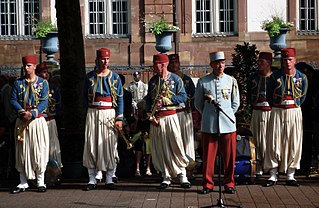 W
WA tirailleur, in the Napoleonic era, was a type of light infantry trained to skirmish ahead of the main columns. Subsequently tirailleurs was used by the French Army as a designation for indigenous infantry recruited in the French colonial territories during the 19th and 20th centuries, or for metropolitan units serving in a light infantry role.
 W
WThe Zouaves were a class of light infantry regiments of the French Army serving between 1830 and 1962 and linked to French North Africa, as well as some units of other countries modelled upon them. The zouaves, along with the indigenous Tirailleurs Algeriens, were among the most decorated units of the French Army.